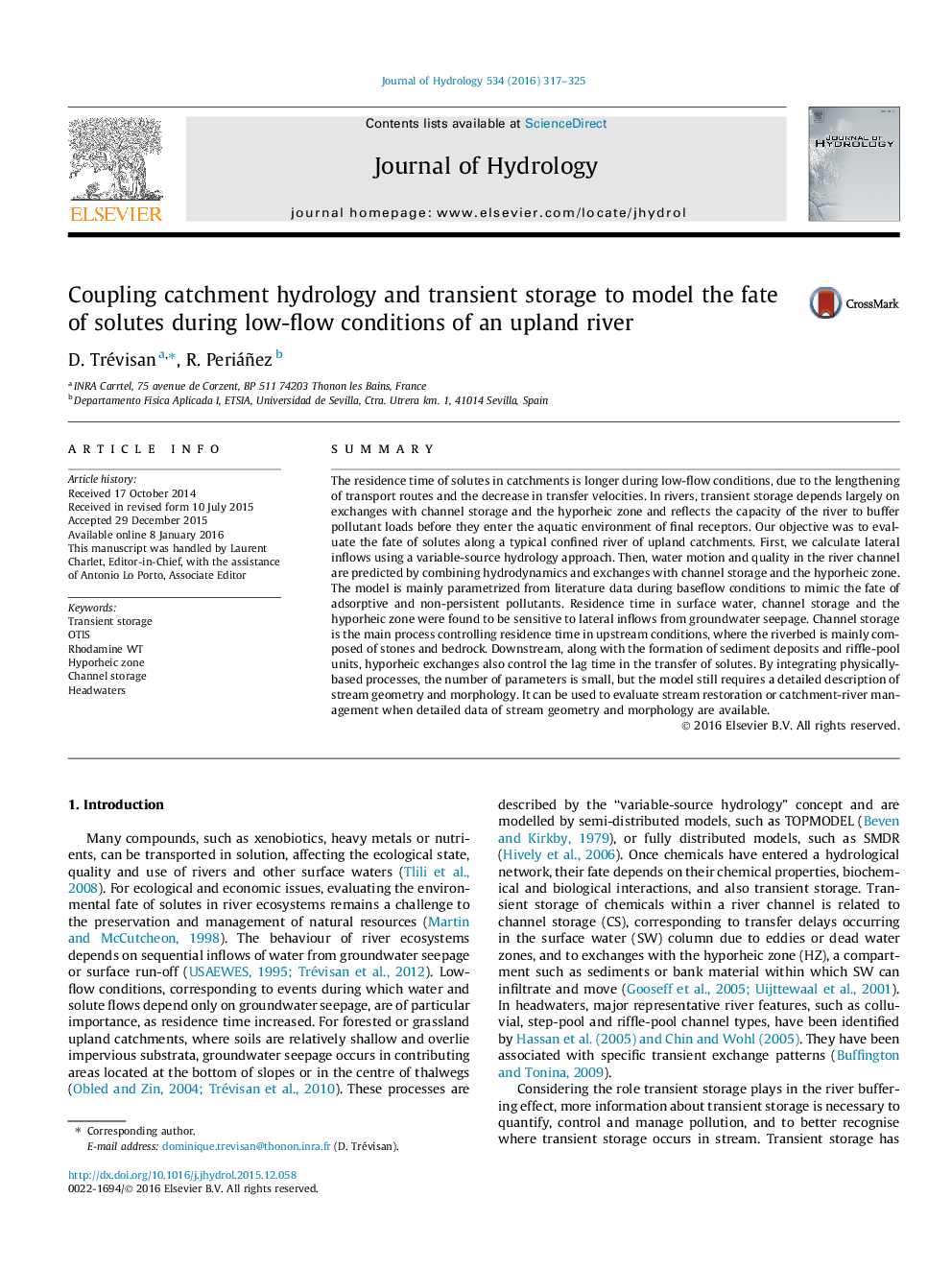| کد مقاله | کد نشریه | سال انتشار | مقاله انگلیسی | نسخه تمام متن |
|---|---|---|---|---|
| 6410341 | 1629918 | 2016 | 9 صفحه PDF | دانلود رایگان |
- From field data collection we parameterize transient storage of a 5Â km-long reach.
- We coupled TOPMODEL to river surface transient storage and hyporheic storage modelling.
- Channel storage influences the residence time of solutes in bed rock unit.
- Channel storage and hyporheic exchange delay solutes transfer in riffle-pool unit.
SummaryThe residence time of solutes in catchments is longer during low-flow conditions, due to the lengthening of transport routes and the decrease in transfer velocities. In rivers, transient storage depends largely on exchanges with channel storage and the hyporheic zone and reflects the capacity of the river to buffer pollutant loads before they enter the aquatic environment of final receptors. Our objective was to evaluate the fate of solutes along a typical confined river of upland catchments. First, we calculate lateral inflows using a variable-source hydrology approach. Then, water motion and quality in the river channel are predicted by combining hydrodynamics and exchanges with channel storage and the hyporheic zone. The model is mainly parametrized from literature data during baseflow conditions to mimic the fate of adsorptive and non-persistent pollutants. Residence time in surface water, channel storage and the hyporheic zone were found to be sensitive to lateral inflows from groundwater seepage. Channel storage is the main process controlling residence time in upstream conditions, where the riverbed is mainly composed of stones and bedrock. Downstream, along with the formation of sediment deposits and riffle-pool units, hyporheic exchanges also control the lag time in the transfer of solutes. By integrating physically-based processes, the number of parameters is small, but the model still requires a detailed description of stream geometry and morphology. It can be used to evaluate stream restoration or catchment-river management when detailed data of stream geometry and morphology are available.
Journal: Journal of Hydrology - Volume 534, March 2016, Pages 317-325
